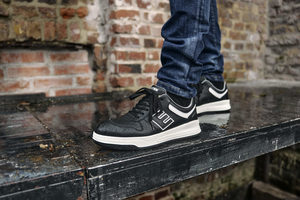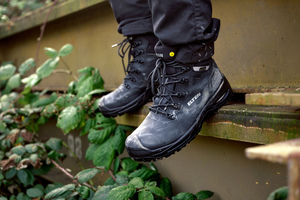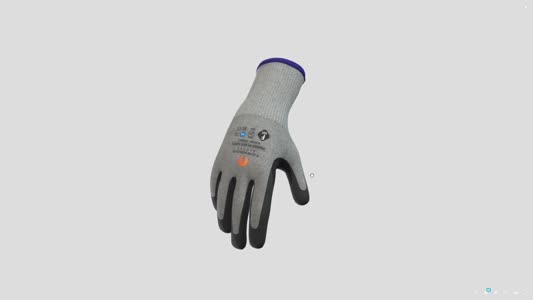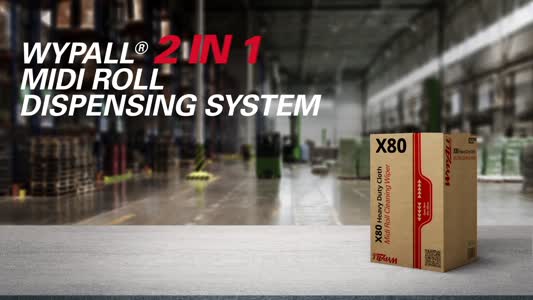
 |
Mark Sennett
Managing Editor |
 |
Kelly Rose
Editor |
| Home> | PPE | >Safety Footwear | >Moving forwards |
Moving forwards
30 September 2025
WHEN IT comes to footwear selection for work, the needs of the task in hand and the wearer needs to be considered. Tom Harper explores the advances in this vital protection.

There have been significant developments in safety footwear, with advancements in materials, ergonomics, and protective technologies greatly enhancing both worker safety and comfort across various industries.
The material of safety footwear is important because it directly influences the level of protection, comfort, durability, and suitability for specific work environments. Different materials provide resistance to hazards such as impact, chemicals, water, heat, and electrical currents.
Material matters
To meet the demand of producing occupational and safety footwear for all areas of application, Elten uses a wide range of materials. The choice of materials has a significant impact on factors such as the durability and longevity of the shoes, as well as their wearing comfort. Each area of application presents unique challenges, which is why Elten’s specialists always carefully consider which material is the most suitable. All materials must meet the requirements of EN ISO 20345:2022, the European standard for safety footwear, which defines essential properties such as water resistance, breathability, and mechanical strength.
Leather remains a widely used material due to its robustness, longevity, and natural breathability. Smooth leather, for example, is water-repellent and easy to clean, making it ideal for construction, landscaping, and heavy-duty industrial work. In sectors such as metalworking or welding, leather is indispensable due to its resistance to heat and sparks. However, leather is heavier than synthetic alternatives and unsuitable for individuals with leather allergies. To reduce environmental impact, ELTEN sources nearly all of its leather from tanneries certified by the Leather Working Group, which promotes sustainable practices in the leather industry.
High-performance synthetics offer a lightweight and durable alternative to leather. One such material developed by GORE is Extraguard, a proprietary upper construction that is 40% lighter than leather, highly abrasion-resistant, and minimally absorbent. It remains lightweight even in wet conditions, dries quickly, and requires no special care – making it suitable for demanding outdoor environments such as road construction, utility work, or forestry.
Cordura, a textile made from polyamide fibres, is another high-performance material known for its tear and abrasion resistance. It is lightweight, breathable, and quick-drying, making it a popular choice in logistics, manufacturing, and skilled trades. Cordura is often combined with other materials to enhance durability and flexibility, especially in footwear designed for dynamic movement or frequent kneeling.
Mesh fabrics, typically made from polyester or nylon, are used in indoor environments where breathability and comfort are key. These materials are soft, lightweight, and contribute to a pleasant foot climate, especially when paired with moisture-wicking linings. Mesh is commonly found in safety footwear for light industrial work, warehousing, and electronics assembly, where thermal comfort and flexibility are more important than robustness.
Microfibre, composed of ultra-fine polyamide fibres, offers a suede-like appearance and is both soft and shape-retaining. When coated with polyurethane, it becomes easy to clean and suitable for hygiene-sensitive sectors such as healthcare, pharmaceuticals, and food processing. Microfibre and other synthetic textiles are also essential in the production of vegan safety footwear, a growing segment in response to increasing demand for animal-free products.
Each material has its own strengths and limitations. By offering a broad portfolio of materials, manufacturers like ELTEN can tailor their footwear to meet the specific demands of diverse work environments – from cold storage facilities to high-temperature foundries.
Energy return and comfort
While upper materials determine a shoe’s suitability for specific environments, the sole plays a crucial role in comfort and injury prevention – especially for workers who spend long hours on hard surfaces. Traditional safety shoes often lack adequate shock absorption, leading to fatigue, joint stress, and long-term health issues.
To address this, ELTEN introduced a groundbreaking sole technology that incorporates Infinergy, a particle foam developed by BASF. Originally used in high-performance sportswear, Infinergy combines cushioning with a high rebound effect. When the material is compressed under the foot, it absorbs impact energy and then returns a significant portion of it to the wearer, reducing fatigue and enhancing walking dynamics.
This energy-returning foam is integrated into various sole constructions tailored to different work environments.
Outdoor and construction settings benefit from soles with deep treads and defined heel edges, providing grip on uneven terrain and ladder rungs. These soles often include waterproof and breathable upper materials with membranes such as GORE-TEX Performance Comfort Footwear, which keep feet dry while allowing moisture to escape. This is especially important in sectors such as civil engineering, agriculture, and landscaping, where workers are exposed to changing weather and ground conditions.
Industrial and logistics environments require slip-resistant soles with aggressive tread patterns to prevent accidents on wet or oily surfaces. Durable upper materials and protective toe caps further enhance safety. Infinergy helps reduce the strain of repetitive walking and standing, which is common in warehouse operations, assembly lines, and packaging facilities.
Indoor workplaces call for lightweight, flexible soles with targeted cushioning zones in the forefoot and heel. These features support dynamic movement and reduce strain during long shifts on concrete floors. Infinergy contributes to a more responsive walking experience, which can be especially beneficial in healthcare, hospitality, and cleanroom environments.
Specialised applications, such as kneeling work or environments with high moisture exposure, demand additional features like abrasion-resistant toe caps, hydrophobic uppers, and climate-regulating linings. Infinergy retains its cushioning properties even under repeated strain, making it suitable for tasks that involve frequent crouching or static standing.
Importantly, this sole technology is not limited to one demographic. ELTEN has also developed models specifically designed for women’s feet, incorporating the same energy-returning foam while addressing anatomical differences. These models offer a combination of lightweight materials, breathable linings, and ergonomic design to ensure comfort and protection for female workers in all sectors – from laboratories to logistics.
Responsibility and innovation
In addition to performance and protection, modern safety footwear must also meet growing expectations around environmental responsibility. Manufacturers are increasingly turning to sustainable materials, reducing production waste, and exploring recycling options for used footwear. While challenges remain – particularly in developing scalable recycling systems – these efforts reflect a broader shift toward more circular and resource-efficient practices in the industry.
At the same time, innovation continues to drive progress. Advances in sole construction, breathable membranes, and ergonomic design are helping to redefine what safety footwear can offer.
Broader trends
The evolution of safety footwear reflects broader trends in industry and society: the need for comfort and performance, the demand for sustainable practices, and the importance of tailoring products to diverse user needs. By combining traditional craftsmanship with modern materials and technologies, manufacturers like ELTEN are meeting these challenges – ensuring that safety shoes not only protect, but also support the people who wear them every day. (1196 words)
Tom Harper is country manager UK & Ireland at Elten. For more information, visit www.elten.com

























